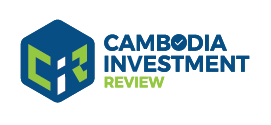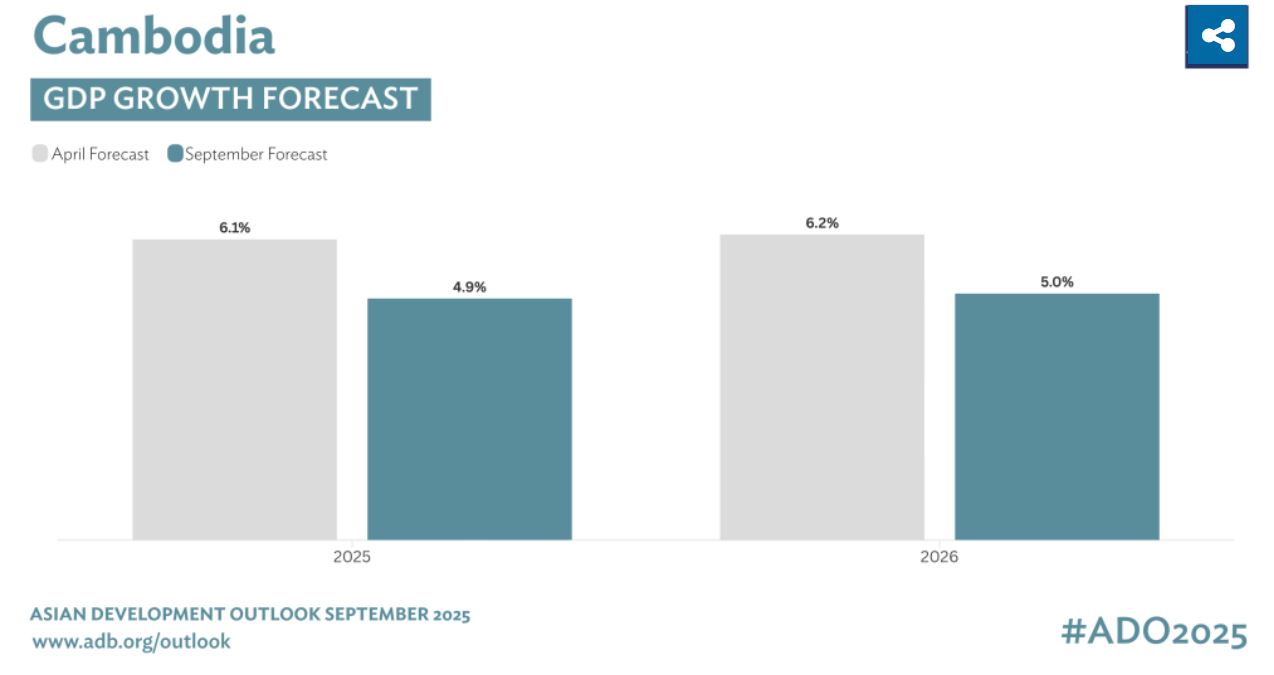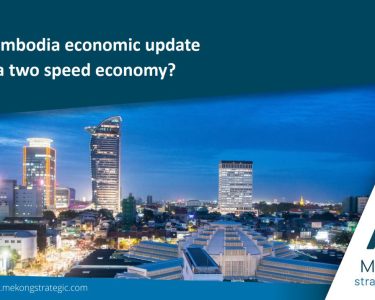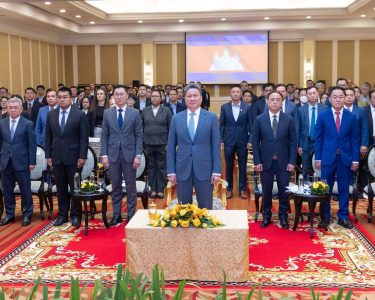Cambodia Investment Review
The Asian Development Bank (ADB) has revised down its growth projections for Cambodia, citing mounting challenges from border tensions with Thailand and persistent uncertainty over U.S. trade policy.
Cambodia’s economy is now expected to expand 4.9% in 2025, down from the 6.1% forecast in April, while the 2026 outlook has been trimmed to 5.0% from 6.2%
Industrial Sector Remains Key Driver
Despite the downgrade, ADB said the Kingdom’s economy has shown resilience through the first half of 2025, supported by moderating inflation and robust industrial performance.
Read More: ADB and SERC Launch 10-Year Securities Masterplan to Tackle Market Challenges
Garment exports surged 22.2% year-on-year in the first six months, buoyed in part by U.S. buyers stocking up ahead of tariff adjustments. A more favorable 19% U.S. tariff rate, introduced in August, is expected to keep momentum steady in both garment and non-garment manufacturing
Non-garment exports also expanded nearly 9%, led by electrical cables, wood-based products, and bicycles. Overall, industry is projected to grow 7.9% this year before strengthening further to 8.3% in 2026.
Services and Tourism Under Pressure
Services growth, however, is expected to slow sharply to 2.8% in 2025 and 2.6% in 2026. While Chinese visitor numbers have boosted tourism recovery, ongoing tensions with Thailand are hitting cross-border travel.
Arrivals from Thailand dropped more than 60% in June compared with last year, a setback for a market that accounted for around a third of Cambodia’s total visitors in 2024.
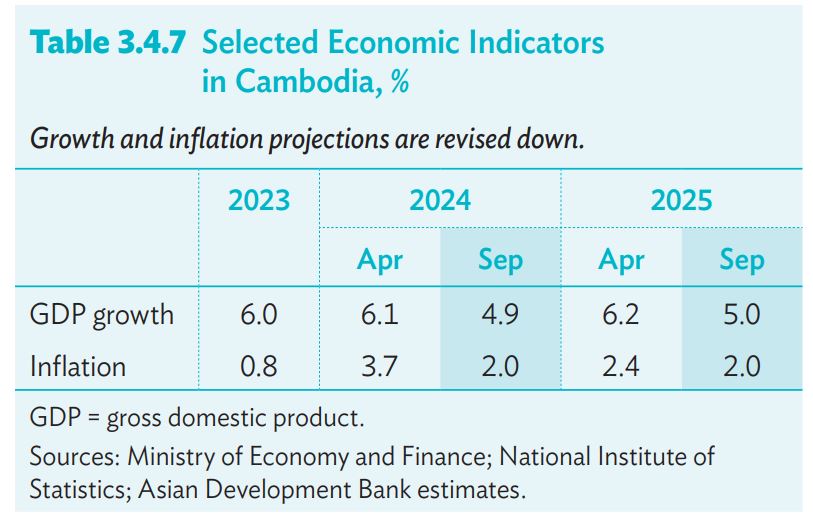
Agriculture and Inflation Trends
Agriculture is forecast to expand modestly by 1.1% in both 2025 and 2026, supported by steady demand for exports such as cashew nuts and milled rice. Returning migrant laborers from Thailand are also expected to support growth in the sector.
Inflation has eased significantly, falling from 6% in January to 1.6% in June. ADB expects consumer price growth to average around 2% through 2025 and 2026, helped by softer food prices and declining fuel costs
Fiscal and External Balances
The government’s budget deficit is projected to widen to $1.5 billion, or 3.1% of GDP, in 2025, driven by higher spending on defense and social programs linked to border tensions. The gap is expected to narrow gradually under the 2026–2028 fiscal framework.
Meanwhile, foreign direct investment inflows rose 6.1% year-on-year in the first quarter of 2025 to $1 billion, while reserves climbed to $24.8 billion by midyear, covering nearly eight months of imports
Risks Ahead
ADB cautioned that Cambodia’s outlook faces downside risks from weaker growth in advanced economies, prolonged border disputes, and global trade policy uncertainty. High private debt levels also remain a vulnerability.
“Cambodia’s economy continues to show resilience,” said Jyotsana Varma, ADB’s Country Director for Cambodia. “Industry remains the growth engine, while recovery in construction, tourism, and agriculture could help rebalance expansion in the coming years.”
